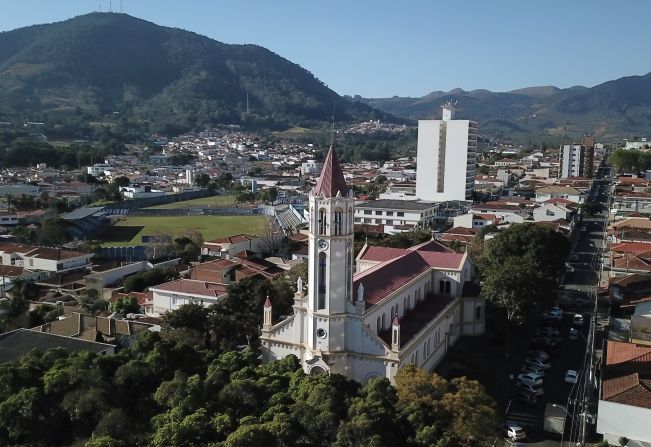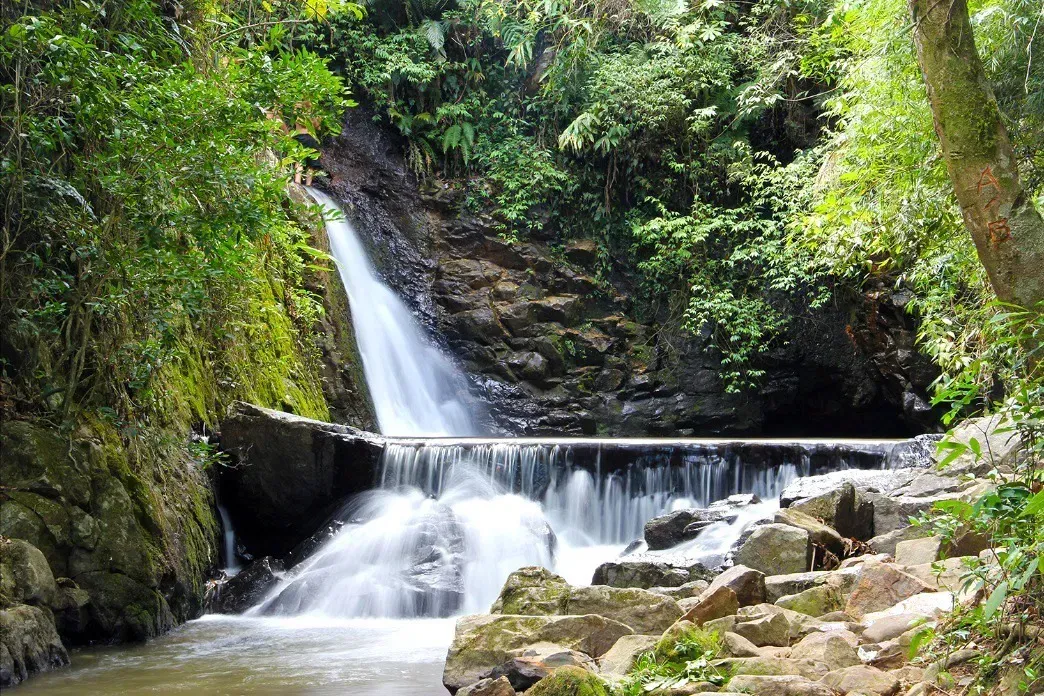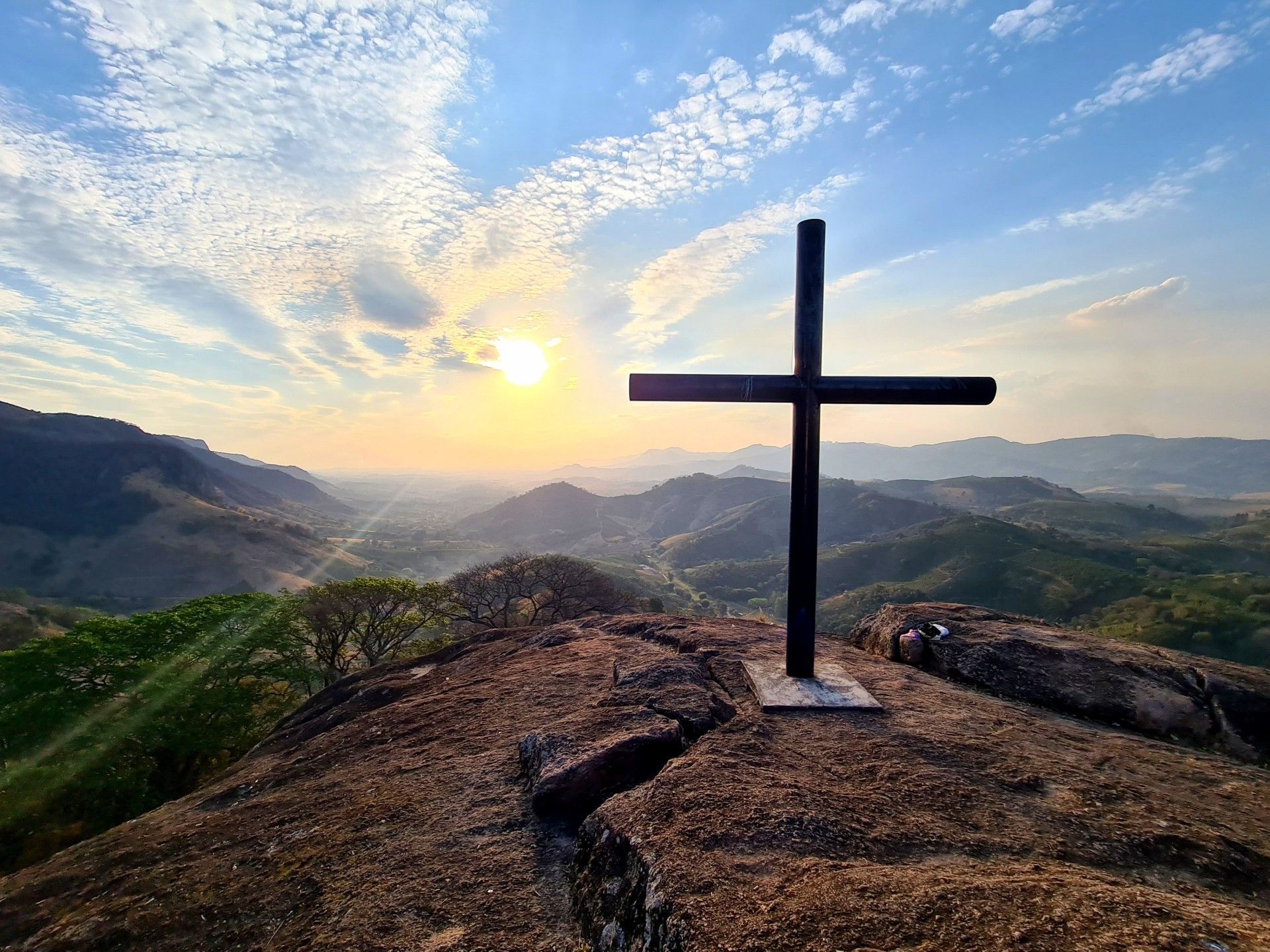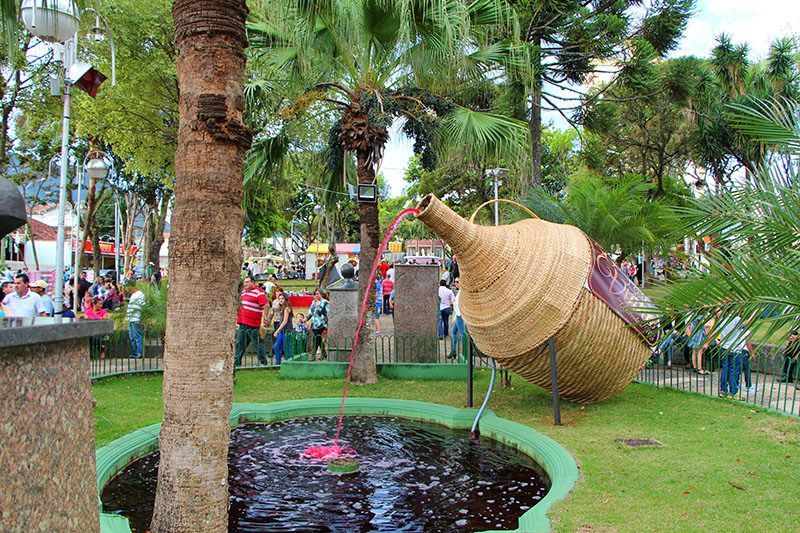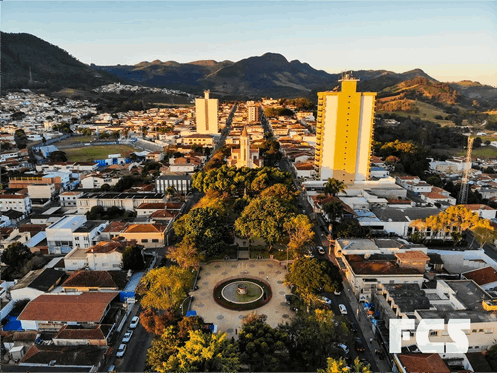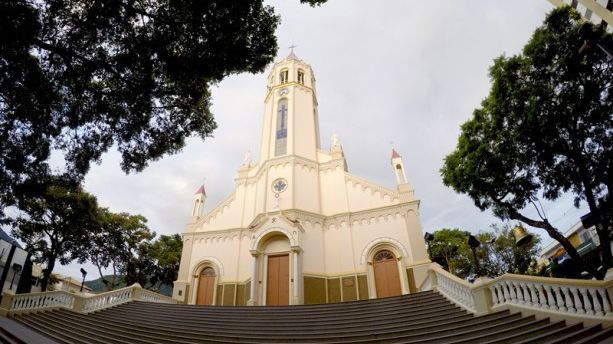Andradas - MG
On this page, the Portal Peregrino da Esperança presents the city of Andradas in Minas Gerais, known as the "Land of Wine" and whose patron saint is São Sebastião.
🕊️ "May Saint Sebastian guide our steps and support those who need it most, strengthening the faith in their hearts."
Features of the City of Andradas - MG
The city of Andradas, located in the interior of the state of Minas Gerais, stands out for its unique combination of tradition, nature and development. Located in the south of the state, close to the border with São Paulo, Andradas is known as the “Land of Wine” due to its strong winemaking tradition that dates back to the arrival of Italian immigrants in the late 19th and early 20th centuries. When these immigrants settled in the region, they found a climate and terrain that were favorable to grape cultivation and quickly established vineyards that would give rise to a prosperous artisanal wine production. Over time, this activity became one of the city’s trademarks, which still preserves family-run wineries and holds events linked to wine culture, such as the traditional Wine Festival, which attracts visitors from different regions.
The development of Andradas, however, is not limited to wine production. The city also has a diversified economy, which includes the ceramics industry, agribusiness and tourism. The ceramics sector, in particular, has gained prominence over the decades, with the installation of several factories that employ local labor and contribute significantly to the economic dynamism of the region. At the same time, agriculture remains alive with the cultivation of coffee, corn, potatoes and other crops typical of the rural area of Minas Gerais. This balance between the industrial sector and agricultural life gives the city a balanced profile, in which progress coexists with the simple and welcoming lifestyle characteristic of the interior of Minas Gerais.
From a geographical and touristic point of view, Andradas also stands out for its natural beauty. Surrounded by the mountains of the Serra da Mantiqueira, the city offers a breathtaking landscape, ideal for practicing adventure sports such as climbing, hang gliding and hiking. Pico do Gavião, located nearby, is one of the best known spots in the city and one of the best in the country for paragliding, attracting athletes from different parts of Brazil and even abroad.
This vocation for ecotourism and adventure tourism has been increasingly explored, especially by travelers looking for authentic experiences in the middle of nature.
Andradas still maintains a strong sense of cultural identity. Its popular festivals, crafts, typical cuisine and the hospitality of the people of Andradas are elements that reinforce the feeling of belonging and make the city a special place for those who visit it. Despite the changes brought about by time, Andradas preserves its essence: a city that honors its roots, values its territory and seeks to build a future in tune with its traditions. Amidst the mountains of southern Minas Gerais, it remains an example of how the countryside can offer quality of life, cultural richness and economic potential without giving up the simplicity that is so dear to it.
The presence of Andradas on the Águas da Prata branch of the Caminho da Fé represents an important connection between the spirituality, tradition and cultural geography of southern Minas Gerais. Strategically located between mountains and valleys, the city has become one of the landmarks on the route taken by thousands of pilgrims who leave Águas da Prata on their way to the National Sanctuary of Our Lady of Aparecida.
This integration into the Caminho da Fé not only puts Andradas on the Brazilian pilgrimage map, but also strengthens the city's identity as a place of welcome, introspection and natural beauty. As pilgrims cross the municipality, they have the opportunity to experience a moment of pause and contemplation amidst mountainous landscapes, vineyards and small rural properties that preserve the soul of the interior of Minas Gerais.
By welcoming the walkers of the Caminho da Fé, Andradas plays a fundamental symbolic and practical role.
Symbolic because it offers churches, chapels and prayer spaces throughout its territory that invite reflection and retreat. Practical because it has a simple but efficient support network, made up of inns, local businesses and residents who, with typical regional hospitality, provide food, shelter and words of encouragement to those who set out on their journey. The route through Andradas, although challenging in some stretches, is marked by an atmosphere of serenity, driven by the silence of the mountains and the calm pace of rural life, factors that help pilgrims disconnect from the hustle and bustle of everyday life and reconnect with their faith.
Furthermore, the inclusion of Andradas in the Águas da Prata branch of the Caminho da Fé is also a way of strengthening religious tourism in the city, encouraging the appreciation of cultural heritage and the development of initiatives linked to spiritual reception. Many of those who pass through the city end up returning as tourists, eager to experience the charms they discovered during their walk more calmly. The constant presence of pilgrims creates a positive cycle that reinforces the sense of community among residents, who are proud to be part of a route of faith and overcoming. The passage of pilgrims thus becomes part of the local landscape and routine, and is viewed with respect, empathy and admiration.
Andradas, by joining the Caminho da Fé, reaffirms its vocation as a place of sacred passage, where the body is strengthened, the spirit is elevated and human bonds are strengthened. The city in Minas Gerais, with its simplicity and beauty, becomes more than just a point on the route: it becomes a space of renewal, where each step taken by pilgrims is mingled with the history, faith and human warmth that characterize the soul of the people of Andradas. Participation in the Caminho da Fé, therefore, is at the same time an opportunity for growth for the city and a living testimony of the power that faith and hospitality have in uniting paths, people and destinies.
The history of the Igreja Matriz de São Sebastião, located in the center of the city of Andradas, in the interior of the state of Minas Gerais, is deeply linked to the origins and development of the municipality. Its construction dates back to the 19th century, when the small village that would give rise to the city was still known as São Sebastião do Jaguari. At the time, the Catholic faith played a central role in the lives of the population, and the construction of a temple dedicated to the patron saint São Sebastião was not only a spiritual necessity, but also a symbolic landmark for the social organization of the place. The church therefore emerged as a point of convergence, where the community would gather to celebrate masses, religious festivals and decisive moments in collective life, playing an essential role in the consolidation of local identity.
Over the decades, the church underwent several physical transformations that accompanied the city's growth and population increase. From a modest construction made with typical materials of the time, such as adobe and wood, the church evolved into a more solid and imposing building, with architectural lines that reflect a mix of rural simplicity and neoclassical features. The bell tower, visible from various points in the city, became a symbol of Andradas, marking the rhythm of urban life with its chimes, from the mornings to the most solemn liturgical celebrations. Inside the church, the image of Saint Sebastian, venerated with devotion by the faithful, remains the spiritual center of the community, being especially worshiped during the patron saint's festival in January, when the city mobilizes in prayer, processions and cultural events that reinforce its religious heritage.
The Andradas Parish Church is not only a physical place of worship, but also a living witness to the social, political and cultural transformations of the municipality. From the time the village was formed to the city's political emancipation, the church has always been present as a moral and spiritual reference. In religious celebrations, such as weddings, baptisms, funeral masses and traditional festivals, the temple has remained the setting for the most significant experiences in the lives of the people of Andradas. Religiosity, rooted in the daily lives of the population, found in the Church a space for expression, acceptance and hope, especially in times of difficulty faced over time.
Today, the Igreja Matriz de São Sebastião continues to play a central role in the life of Andradas. More than just a historic building, it represents the continuity of the faith of a people who, generation after generation, keep alive the traditions and values inherited from their ancestors. Its imposing presence in the heart of the city is a constant reminder that, even in the face of the changes of the modern world, spirituality, community and collective memory remain fundamental pillars of life in Andradas. The history of the Igreja Matriz is, therefore, inseparable from the history of Andradas, forming a sacred link between the past, present and future of a city that grew around faith.
Photographs of the City of Andradas - MG
